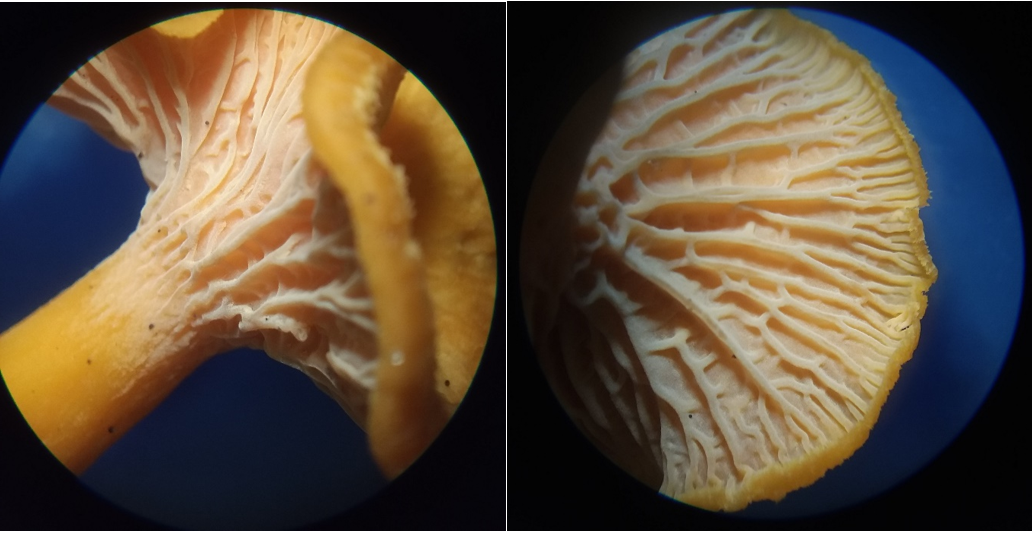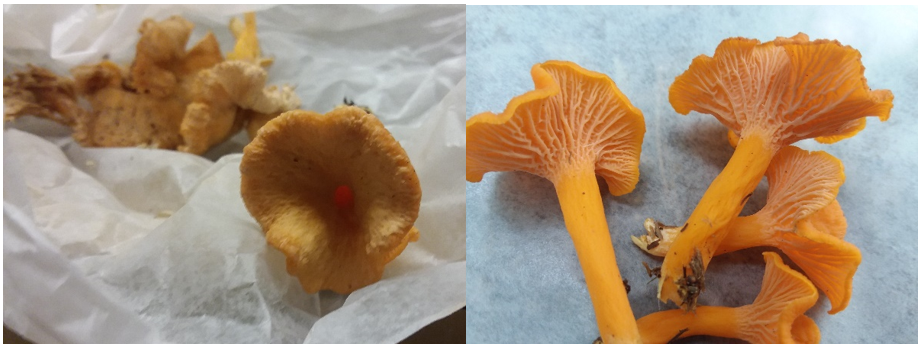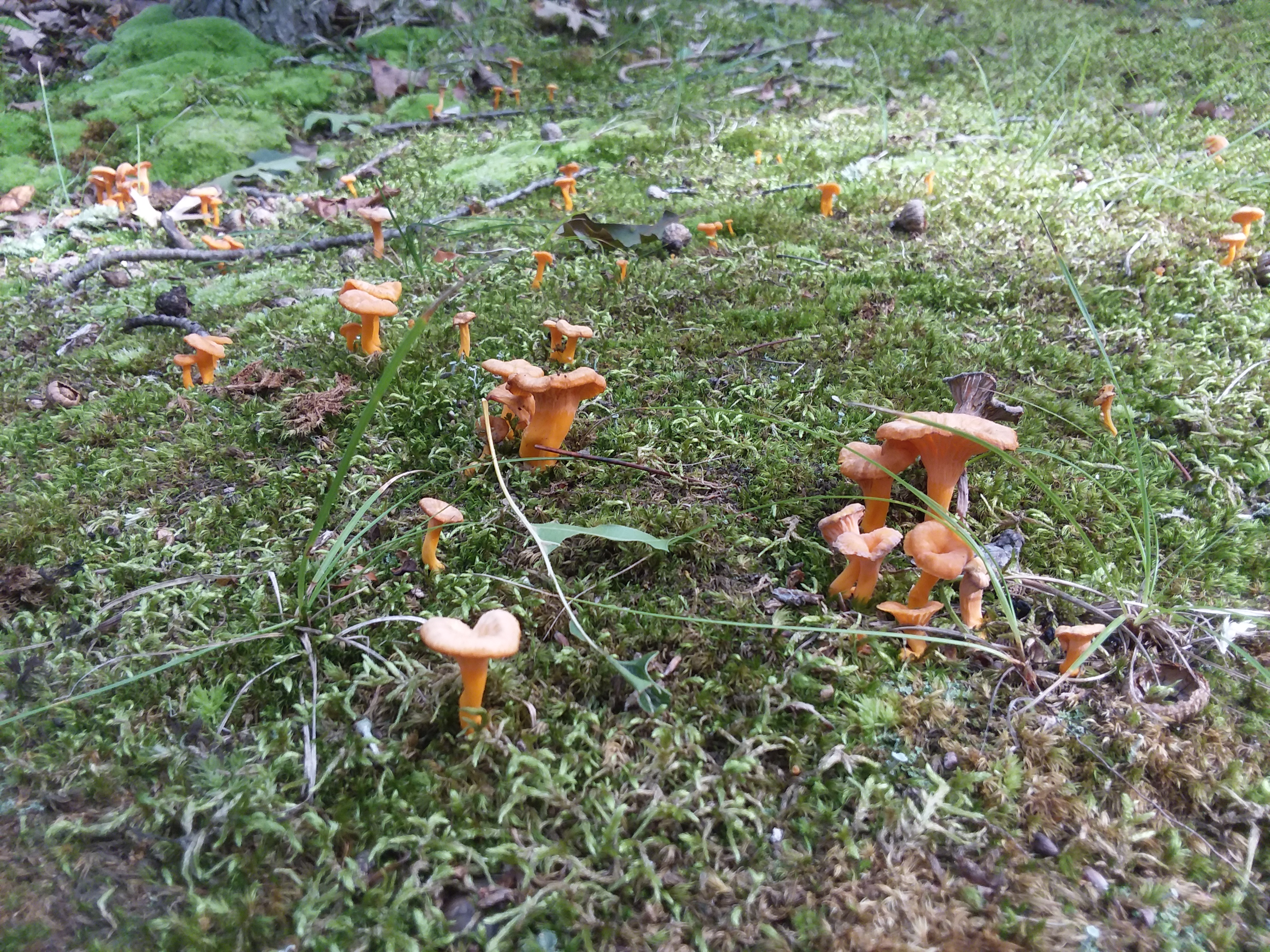Craterellus Ignicolor
Craterellus ignicolor (R.H. Petersen) (Basidiomycota, Chantharellaceae) most often grows in areas with significant shade and in amongst moss in coniferous or hardwood forests.

Craterellus ignicolor (R.H. Petersen)
Taxonomy:
- Kingdom: Fungi
- Division: Basidiomycota
- Class: Agaricomycetes
- Order: Cantharellales
- Family: Cantharellaceae
- Genus: Craterellus
- Species: C. ignicolor

Craterellus ignicolor (R.H. Petersen) (Basidiomycota, Chantharellaceae) most often grows in areas with significant shade and in amongst moss in coniferous or hardwood forests. These fungi can be mycorrhizal with trees such as oak and beech, but can also be saprotrophic and survive off of dead plant material. These craterelles can most often be seen in the summer and fall months either gregariously or standing alone. False gills are clearly visible on the underside of the cap and are usually pinkish to brownish-orange. The cap becomes perforated in the center as it ages and there develops a clear vase-like appearance, rending the stipe hollow. The margins of the cap will also become scalloped and curl with age.


References:
- Kuo, M., & Methven, A. S. (2014). Mushrooms of the Midwest. University of Illinois Press.
- Kuo, M. (2015, February). Craterellus ignicolor. Retrieved from the MushroomExpert.Com.
- MycoBank Craterellus ignicolor, Web. 2, November, 2018.



 Print
Print Email
Email



